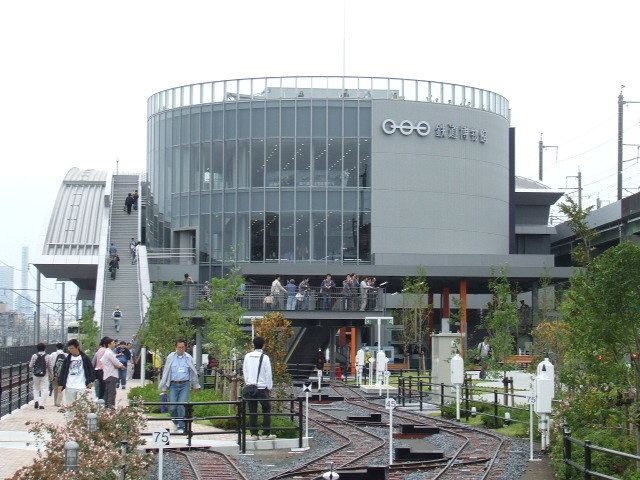Established 14 October 2007 Phone +81 48-651-0088 | Type Railway museum Founded 2007 | |
 | ||
Location Saitama, Saitama, Japan Website www.railway-museum.jp/top.html Address Japan, 〒330-0852 Saitama Prefecture, Saitama, Omiya Ward, Onaricho, 3 Chome−47番 Hours Open today · 10AM–6PMFriday10AM–6PMSaturday10AM–6PMSunday10AM–6PMMonday10AM–6PMTuesdayClosedWednesday10AM–6PMThursday10AM–6PMSuggest an edit Similar Tetsudō‑Hakubutsukan Station, Kyoto Railway Museum, Ōmiya Station, Subway Museum, SCMaglev and Railway | ||
The Railway Museum (鉄道博物館, Tetsudō Hakubutsukan) is a railway museum in Saitama, Saitama, Japan, which opened on 14 October 2007. It was built and is operated by the East Japan Railway Culture Foundation, a non-profit affiliate of the East Japan Railway Company (JR East). It consists of a 19,800 m² building on a site covering 42,500 m², with a display area 9,500 m² in size.
Contents
- Facility
- History
- Driving simulators
- Exhibits
- Locomotives
- Electric railcars
- Diesel railcars
- Passenger carriages
- Imperial carriages
- Freight vehicles
- Access
- Address
- Future plans
- References
The museum features about 30 railway cars, train cab simulators, railway model dioramas, mini trains, storage for artefacts and books, video booths, a multi-purpose hall, a gallery balcony, a cafeteria, a museum shop, and a research room.
Facility
The museum places emphasis on learning through interactive experiences and is mainly divided into two zones: the history zone and the learning zone. The history zone recounts the history of railway technology with the help of trains that were in service in the past. In the learning zone, visitors can gain knowledge of the principles and mechanisms of railway with the use of actual parts and models. The tour of the museum takes roughly two hours with extra time for interactive exhibits.
A library room, known as the "Teppaku Reading Room" opened on 21 July 2012 in the remodelled North Wing of the museum.
History
The present Railway Museum is the successor to the Transportation Museum (交通博物館, Kōtsū Hakubutsukan) in Chiyoda, Tokyo. This museum also opened as the Railway Museum under the elevated railway track near Tokyo Station celebrating the beginning of the 50th year of the railways in Japan on 14 October 1921. In 1936, the Railway Museum was relocated to the new facility built in the place of former building of Manseibashi Station, which station continued to operate until 1943 as an accessory of the museum. The museum was renamed the Transportation Museum in 1948 to cover various means of transportation. On 14 May 2006, the museum was closed pending a move to the new Railway Museum in Saitama.
In November 2012, it was announced that the Railway Museum would form a sister-museum alliance with the National Railway Museum in York, UK.
Driving simulators
The museum features driving simulators that allow visitors to experience being drivers of a D51 steam locomotive, a Shinkansen train, and trains on the Tokaido Line, the Keihin Tohoku Line, and the Yamanote Line. The D51 simulator requires a reservation through a reservation terminal installed in the museum and costs 500 yen, but the other simulators are all free.
Exhibits
The following full-size vehicles are on display.
Locomotives
Electric railcars
Diesel railcars
Passenger carriages
Imperial carriages
Freight vehicles
The English class names of the cars and locomotives listed above are largely based on the English version of Floor Guide of the museum as of October 2007.
Access
The museum is located adjacent to Tetsudō-Hakubutsukan Station on the New Shuttle people mover, one stop from Ōmiya Station, a hub station of the JR East system. The museum has a limited number of parking spaces.
Address
3-47 Ōnari-chō, Ōmiya-ku, Saitama-shi, Saitama-ken 330-0852
Future plans
A new four-storey extension is scheduled to be built, opening in summer 2018. Originally planned to be a five-storey structure opening in autumn 2017, the plans were revised and scaled down in 2016 to reduce excessive costs.
